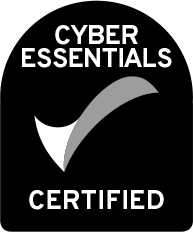New contract terms affecting all new employees and workers to come into force on April 6 2020
From 6 April 2020 there will be changes to the minimum written terms that must be provided to employees AND the timing of when these terms must be provided to them. These terms are known as Section 1 statements, referring to Section 1 of the Employment Rights Act 1996 (ERA).
The changes
The changes are a result of the government’s Good Work Plan (published in December 2018). The Plan’s recommendations are aimed at increasing transparency between employers and workers and improving the enforcement of employment rights.
- All new employees AND workers joining on or after 6 April 2020 will be entitled to receive a Section 1 statement. Previously, the requirement applied to employees only. Note: Existing employees are eligible to request a new Section 1 statement which must be satisfied within one month of the request.
- Up until now an employer has had two months from the employee’s date of joining to provide the information set out in Section 1 of the ERA. From 6 April, the information must be provided on or before the joining date. A Section 1 statement becomes a Day 1 right, save for a limited number of exceptions.
There is a legal distinction made between an employee and a worker. An employee is an individual employed under a contract of employment. A worker who is not an employee works under a contract whereby the individual "undertakes to do or perform personally any work or services for another party to the contract whose status is not …that of a client or customer" (s.230(3) of the Employment Rights Act 1996).
Existing requirements
The current requirements of what to include in a Section 1 statement are:
- The names of the employer and employee.
- The commencement date of employment and the date the employee’s period of continuous employment begins.
- The amount of pay (or how it should be calculated) and the intervals of payment (e.g. weekly or monthly).
- The hours of work, including what amounts to “normal working hours”.
- An employee’s entitlement to holiday and their holiday pay.
- The employee’s job title or a brief description of the work.
- The employee’s place of work.
- The name of a person to whom an employee can appeal if they are dissatisfied with any disciplinary or dismissal decision.
- The name of a person to whom the employee can apply to seek redress of any grievance, together with information on how to make an application.
Further requirements after 6 April 2020
The following is being added to what must be included within a single statement:
- Working pattern and if hours or days may be variable.
- Entitlement to paid leave (including maternity and paternity).
- Any probationary period and its length.
- Any mandatory training provided by the employer and other training for which the employer will not bear the cost.
Failure to comply
A failure to provide a Section 1 statement to an employee or worker may give rise to an employment tribunal claim against the employer.
Contact
If you would like any advice relating to employment law or any aspect relating to HR, contact Downs Solicitors to see how we can help.





